| Thanks to Arthur Lockwood, the Crown Nail Company
of Wolverhampton will never be forgotten. During the last months
of manufacturing he was a familiar figure in the works,
faithfully recording the disappearing scene. Arthur has kindly
allowed me to include some
of the many paintings and sketches that he did there, which are
now one of the few records of tack manufacturing in the U.K. |
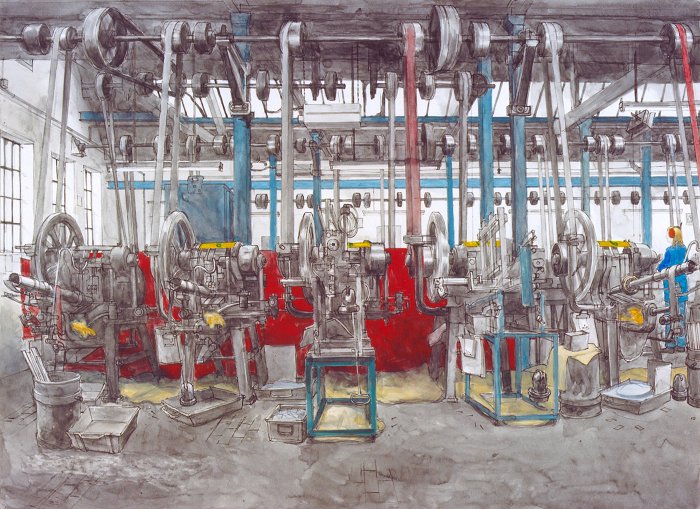
This fine view of the tack shop was painted in
November 2004, about a month before the factory closed. On the
left are two hand-fed large Lloyd tack machines and to
their right are two Lloyd tack machines with autofeeds. The
machine on the far right is another large Lloyd tack machine.
When all of the machines were in operation the noise was
overpowering and the rotating line-shafting, pulleys and belts that
drove the machines was an impressive sight indeed. |
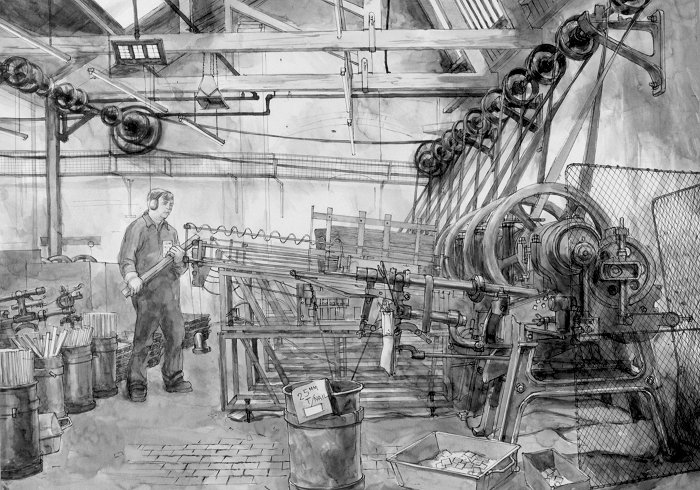
Another view of the tack shop, also from November
2004. The feeder is holding a bundle of steel strips which are
about to be dropped into the magazine on one of the autofeeds.
They are automatically fed into the machines, and tacks and
small nails are cut from them. The two machines on the far right
are large Lloyd tack machines in which the steel strips are
hand-fed, one at a time into the feeding tubes that can be seen
protruding from the front of the machines. |
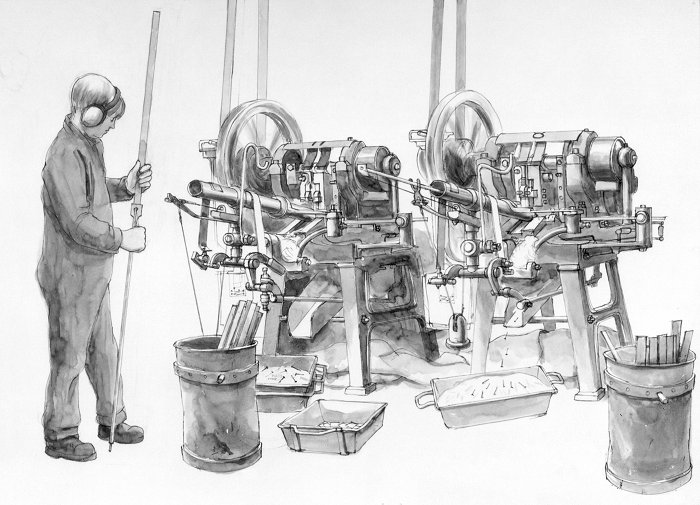
This view, also from November 2004 shows a feeder
loading a steel strip into a feed rod. This is inserted into the
feeding tube where it is rotated through 180 degrees between
each cut. The feeder is about to insert the strip into the
machine on the left. The machine on the right already has a
feed rod inserted, the end of which can be seen
protruding from the feeding tube. The hanging weight below the
tube is attached to the end of the feed rod by a leather and
slowly pulls the steel strip into the machine. |
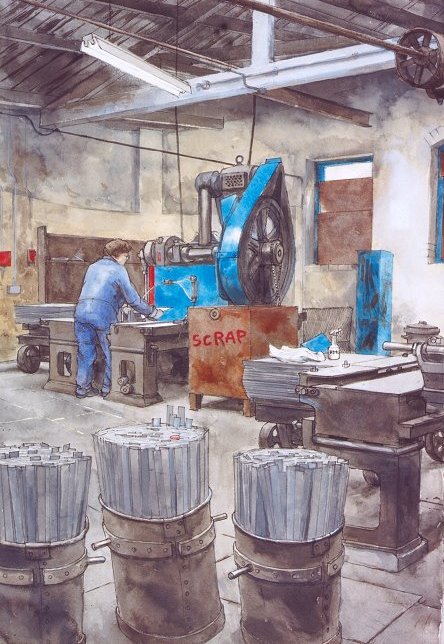 |
This is a view of the shearing shop, again from
November 2004. Kevin Farrington can be seen operating one of the
Rhodes shearing machines that cut the steel strips from a large
piece of sheet steel. Each time a strip was cut, the room
vibrated and a deep thumping noise came from the machine that
could be heard throughout the surrounding area. This was
followed by a tinkling sound as the freshly cut strip fell into
a steel collecting box.
When cut, the steel strips were loaded into kegs to be taken
into the tack shop as required. Some of the loaded kegs can be
seen in the foreground. |
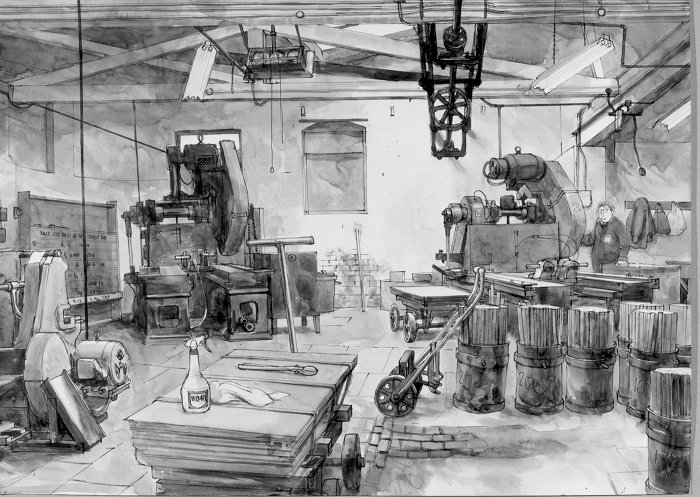
Another view of the shearing shop showing both of
the Rhodes shearing machines. The trolley in the foreground is
loaded with the sheets of steel that are about to be cut into
strips. Loaded kegs can be seen on the right and Kevin
Farrington is standing in the background by the side of a
shearing machine. |
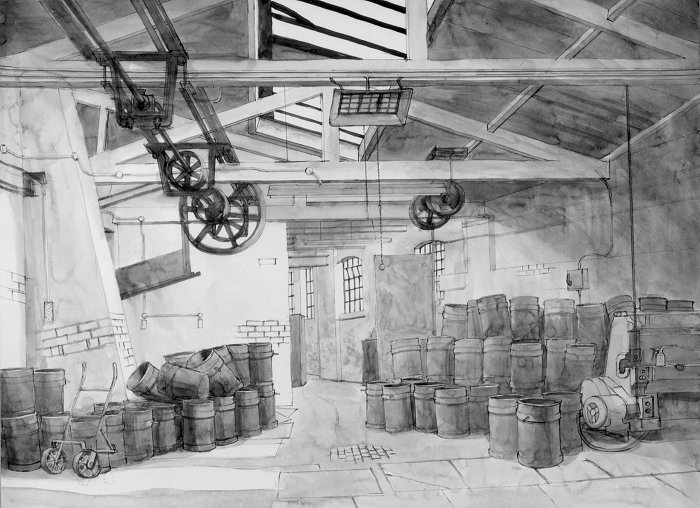
This is a view of the strip store that was drawn
in January 2005 after the end of production. The piles of empty
kegs are awaiting their fate. Within a few days everything was
cleared and most of it was sold for scrap. The overhead
line-shafting was cut down and the building quickly emptied to
become a silent and eerie place. A great contrast to what it was
like a few months before. |
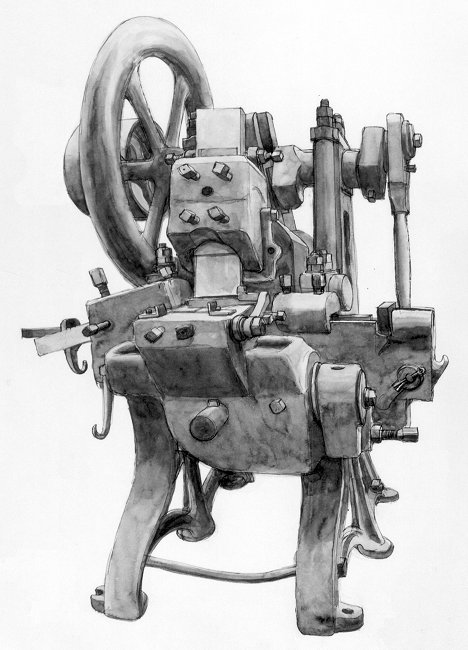 |
This lovely sketch from January 2005 shows an old
nail machine from the 1870s. Thankfully the machine has survived
thanks to the Black Country Living Museum where it is at present
in store. |
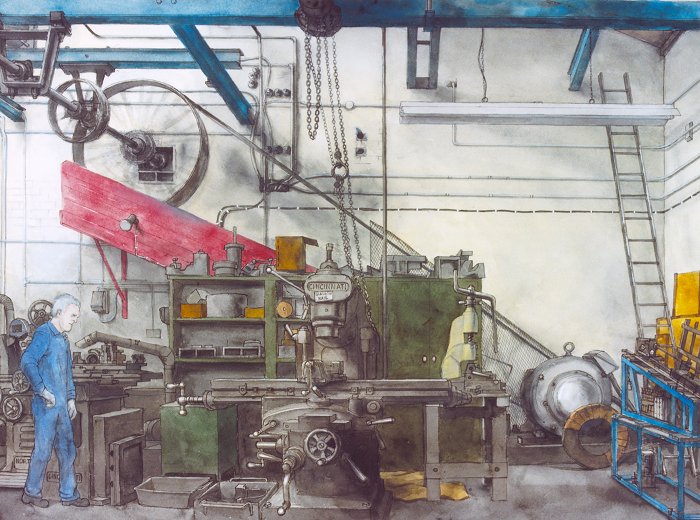
This view shows a corner of the fitting shop in
December 2004 just before the works closed. On the right is the
50hp. electric motor that drives the overhead line shafting.
It's amazing to think that the whole of the tack shop was driven
from just this motor.
On the left is Jim Hughes and in the centre is a Cincinnati
milling machine which luckily has survived. |
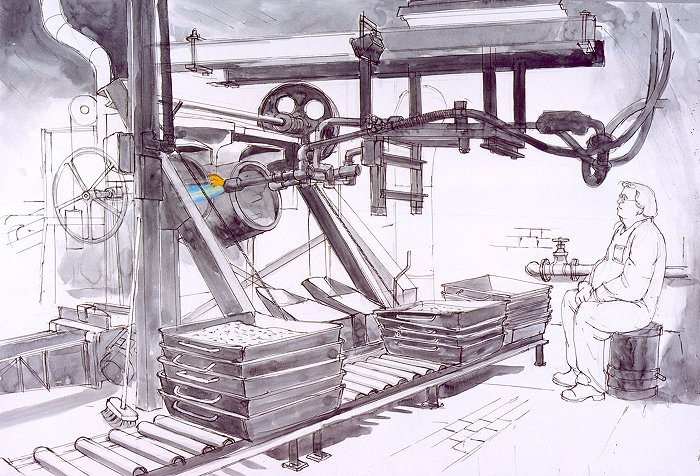
The bluing machine in operation in November 2004.
Kevin Farrington is seen in charge of the bluing machine that
blued the tacks after manufacture.This was the last tack bluing
machine in the country and was designed in-house. When in
operation it was a very impressive sight with long bright flames
licking the rotating drums containing the tacks. It was very sad
to see such an impressive machine being cut-up for scrap. |
|
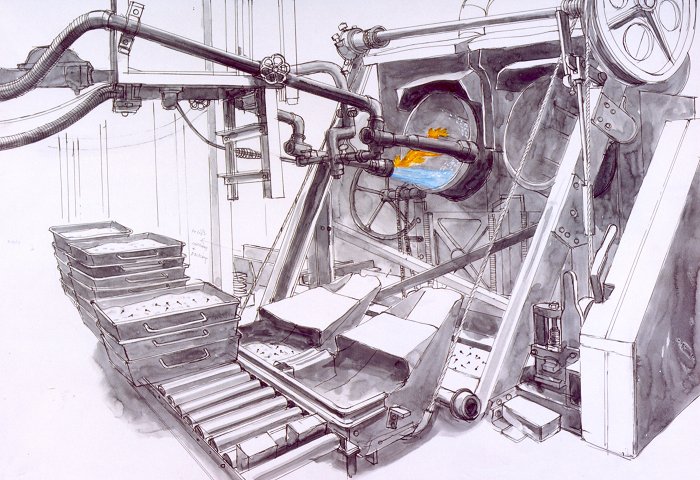
Another view of the bluing machine. |
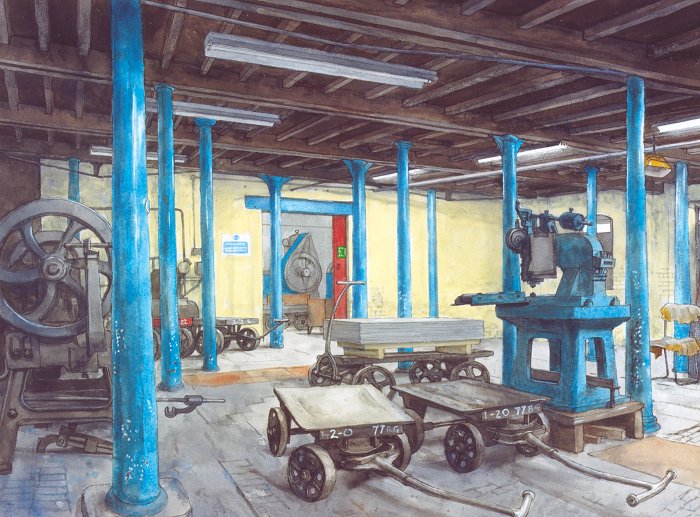
Last but not least is a view of the steel shop
from December 2004, just before production ended. The machine on
the right is the gauging machine that accurately measured the
thickness of the sheet steel before shearing. The steel strips
had to be the correct thickness in order to ensure that the
finished products were of the correct size, quality and
specification. The painting shows one of the last bundles of
steel that was gauged before being used. |

|
Return to
the
previous page |
|